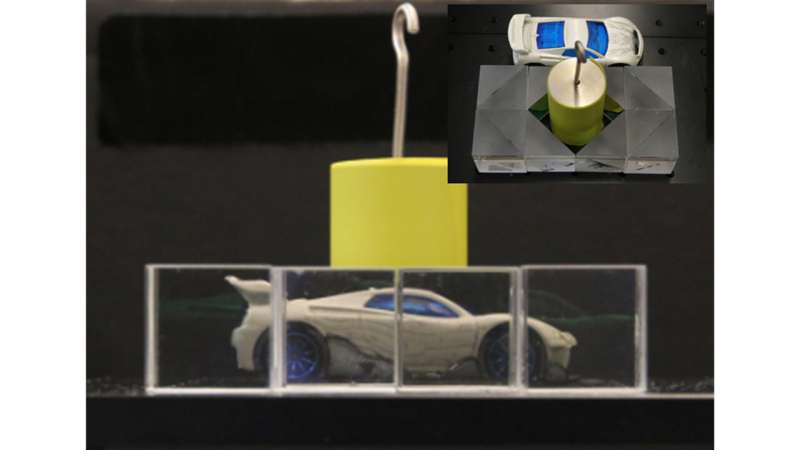Bending light for safer driving; invisibility cloaks to come?

Optical cloaking allows objects to be hidden in plain sight or to become invisible by guiding light around anything placed inside the cloak. While cloaking has been popularized in fiction, like in the "Harry Potter" books, researchers in recent years have started realizing cloaks that shield objects from view by controlling the flow of electromagnetic radiation around them.
In the Journal of Applied Physics, researchers from the Toyota Research Institute of North America examined recent progress of developing invisibility cloaks that function in natural incoherent light and can be realized using standard optical components, part of ongoing research over the last two decades.
Invisibility cloaks potentially have a broad array of applications in sensing and display devices in warfare, surveillance, blind spot removal in vehicles, spacecraft, and highly efficient solar cells. The researchers examined blind spots that occur in vehicles, such as the windshield pillars, the stanchions that frame windshields.
"We are always looking for ways to keep drivers and passengers safe while driving," said author Debasish Banerjee. "We started exploring whether we could make the light go around the pillar so it appeared transparent."
Advances in metamaterials, engineered complexes of metals and dielectrics for manipulating electromagnetic waves, have opened up the possibility for realizing optical cloaks around an object by making incoming light bypass it.
Perfect optical cloaking requires the total scattering of electromagnetic waves around an object at all angles and all polarizations and over a wide frequency range, irrespective of the medium. This has not yet been achieved.
However, by simplifying the invisibility requirements, innovative work with spherical transformation cloaks, carpet cloaks, plasmonic cloaks, and mantle cloaks in narrowband microwave, infrared, and optical wavelengths has been accomplished over the last two decades.
"One of the real challenges is that we have to optimize optical elements around an object so that phase relationships are preserved," said Banerjee.
For optimization, artificial intelligence and machine learning may help resolve certain challenges. Algortihms can help solve the necessary inverse design problem in the context of practical cloaking devices.
These can be powerful tools to predict and analyze the optical responses of these devices or detectors without time-consuming and expensive simulations, which may raise the possibility of intelligent invisibility that is adaptive to movements, shapes, and the environment.
With the fast development of both AI-aided design and additive manufacturing capabilities, it is foreseeable that flexible cloaks that could function effectively at all incident angles with a high cloaking ratio and a wide field of view could be realized and mass-produced at low cost and high efficiency.
More information: "Optical cloaking and invisibility: From fiction toward a technological reality" Journal of Applied Physics, aip.scitation.org/doi/10.1063/5.0048846
Journal information: Journal of Applied Physics
Provided by American Institute of Physics




















